October/November 2019
General Announcements
- A welcome message from the IAG President
- Levallois Medal presented to Christoph Reigber at Geoscientific Colloquium at the GFZ on the occasion of his 80th birthday Meeting
Meetings Calendar
IAG Sponsored Meetings
- GGOS Days 2019
- SIRGAS Symposium 2019
- 11th IVS General Meeting
- IGS Workshop "IGS 2020: Science from Earth to Space"
- 43rd COSPAR Scientific Assembly
- 22nd meeting of the Consultative Committee for Time and Frequency (CCTF)
- IAG Scientific Assembly
IAG Related Meetings
- 4th Symposium of the Committee on Space Research (COSPAR)
- 19th International Symposium on Geodynamics and Earth Tides (G-ET Symposium 2020)
Reports
- 5th Workshop on “Satellite Geodesy and Ionosphere Research” (SGI2019) International Workshop for the Implementation of the Global Geodetic Reference Frame (GGRF) in Latin America
- Report on the 5th IAG Symposium on Terrestrial Gravimetry: Static and Mobile Measurements (TG-SMM 2019)
General Announcements
A welcome message from the IAG President
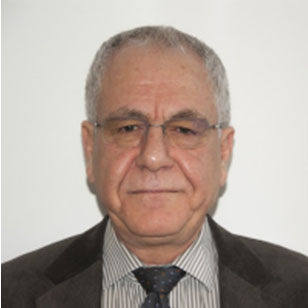
Zuheir Altamimi
The International Union of Geodesy and Geophysics (IUGG), comprising 8 associations, including our International Association of Geodesy (IAG), celebrated its 100th anniversary on July 29, 2019 at the UNESCO Headquarters in Paris. The activities of IUGG in the years following its creation have been dominated by geodesy, hence probably the precedence of the term "geodesy" to the term "geophysics" in the name of the union.
The advent of space geodesy since the early 1960s has revolutionized the role of geodesy and its contribution to Earth sciences and societal applications. Geodesy is therefore global by nature, and a science in its own right, serving to quantify and improve our knowledge of temporal variations of the three fundamental properties of the Earth: its shape, its gravity field and its orientation in space. A truly global geodetic reference frame has become not only achievable, but also the indispensable standard by which these temporal variations are quantified and thus easily interpreted.
My election as President of the International Association of Geodesy (IAG) for the period 2019-2023 coincides not only with the hundredth anniversary of the association, but also with the multiple challenges facing geodesy today.
IAG, through the work of its international services, provides unique and critical geodetic products for Earth science and positioning applications: satellite orbits, terrestrial and celestial reference frames, Earth orientation parameters, gravity fields, etc. The development of these products is based on a geodetic infrastructure that is in danger of degradation and sustainability on the long-term, due mainly to budgetary reasons, but also due to the public ignorance of the essential contribution of geodesy to society. Not being the owner of the geodetic infrastructure - funded by national mapping agencies, space agencies, universities and research laboratories -, the IAG must therefore rely on international initiatives to ensure the long-term sustainability of the geodetic infrastructure.
The United Nations "UN-GGIM" initiative on global geospatial information management, including geodesy, the resolution (http://ggim.un.org/documents/A_69_L53_E.pdf) adopted by its General Assembly in February 2015 on the global geodetic reference frame for sustainable development, and the creation of a sub-committee on geodesy under the umbrella of UN-GGIM, represent an opportunity that the IAG should not miss. No one single country can provide alone all the geodetic products that are fundamental to society, and therefore the establishment of an intergovernmental mechanism, and the creation of an operational global geodetic center on a global scale become obviously the way to follow in order to ensure the sustainability of global geodesy.
I am thankful to the IAG Council who elected me and the EC members for the four years to come, and will do my very best to meet the Council expectation in order to advance geodesy and our association. Among other missions and duties of the IAG components, the following are key points that need to be emphasized within the activities of IAG during the coming period:
- Commission 1: to advance theory, realization and future needs of reference frame determination and representations, taking into account that our planet is constantly deforming;
- Commission 2: to advocate for new gravity satellite missions that are needed to increase the accuracy of gravity measurements and our understanding of Earth mass changes, but also to advance the development of the International Height Reference Frame (IHRF);
- Commission 3: to advance the contribution of geodesy to seismology, volcanology and natural hazards;
- Commission 4: to embrace new sensors and technologies for increasing the precision of positioning applications;
- Inter-Commission Committee on Theory (ICCT): to enhance geodetic theory, but also applied geodesy for the continuous improvement of IAG fundamental products;
- IAG Services: to continue their hard work in improving their geodetic products in response to user needs and new challenges;
- GGOS: to focus more on advocacy to the outside, and promote the work of IAG Commissions and Services and their geodetic products. GGOS should not appear as or replace IAG, but as an IAG ambassador to the outside, in order to preserve the IAG branding image.
IAG continuous success relies on the contribution of all of you to its activities. Young scientists in particular should also feel at home within IAG and are encouraged to contribute to its various working and study groups.
Let’s work together and contribute to the continuous success of our Association.
Sincerely yours
Zuheir Altamimi
Levallois Medal presented to Christoph Reigber at Geoscientific Colloquium at the GFZ on the occasion of his 80th birthday
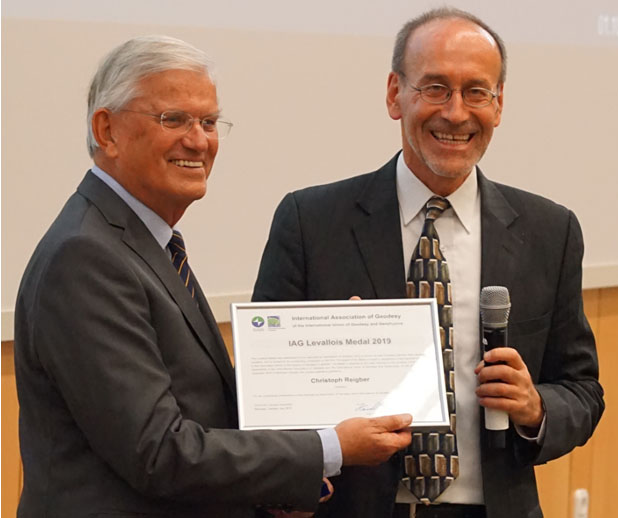
Prof. Harald Schuh handing over the Levallois Medall to Prof. Christoph Reigber at GFZ (Photo: Markus Bradke, GFZ)
On the occasion of the 80th birthday of Prof. Dr.-Ing. Dr.-Ing. E.h. Christoph Reigber, the Helmholtz Centre Potsdam - GFZ German Research Centre for Geosciences organized an honorary colloquium for its former department director on October 1, 2019.
Christoph Reigber celebrated his 80th birthday on July 8 of this year already. Now, after the summer holidays, the GFZ invited to this Honorary Colloquium and guests from all over Germany and overseas followed the invitation to Potsdam's Telegrafenberg. After being welcomed by Reinhard Hüttl, Scientific Director of the GFZ, Harald Schuh, Director of Department 1 “Geodesy” of the GFZ and Honorary President of IAG, first presented the jubilee with the highest award of the IAG, the Levallois Medal, for his outstanding services to the IAG and geodesy. Former IAG president Chris Rizos congratulated on the well-deserved award in a cordial video message.
The following colloquium contributions were without exception presented by meritorious, long-standing companions of the honored. The lectures captivated both the geodesists and the non-geodesists in the audience with historical backgrounds, scientific explanations and anecdotal sprinkles. Harald Schuh moderated the afternoon in a wonderfully entertaining way. Reiner Rummel from the Institute for Astronomical and Physical Geodesy, TU Munich, gave an overview of "Christoph Reigber and Satellite Geodesy" in his laudation. Hermann Drewes from the German Geodetic Research Institute DGFI, TU Munich, reported on "Networks, Geopotential, Earth Rotation and Geodynamics: The Reigber Era at DGFI in Munich". Rolf Emmermann, founding director of GFZ, described Reigber's role in establishing GFZ. Gerhard Beutler from the Astronomical Institute of the University of Bern and former President of the IAG, in his lecture on "Planet Earth and the Scientific Services of the IAG", referred to Reigber's role in setting up these services, in particular the IGS and the IERS, each of which he headed for several years. Jörn Lauterjung, Director of IT Services at the GFZ and current successor of Christoph Reigber as Co-Director of the Central Asian Institute for Applied Geosciences (CAIAG) in Bishkek, Kyrgyzstan, reported on creation and development of CAIAG. Georges Balmino from the Groupe de Recherches de Geodesie Spatiale (GRGS) of the French space agency CNES in Toulouse gave an exciting overview of the first 30 years of Franco-German cooperation in gravity field modelling up to the turn of the millennium against the background of the lifelong friendship between himself and the jubilee. Ludwig Grunwaldt of GFZ Section 1.2 "Global Geomonitoring and Gravity Field" took the audience on an adventurous journey through time in his lecture on the satellite mission CHAMP: apart from the groundbreaking scientific results for the exploration of the gravity and magnetic fields and the atmosphere, the truly radical aspects of the mission were revealed. Finally, Frank Flechtner, head of GFZ Section 1.2 and Co-PI of the GRACE and GRACE FO missions, presented the contributions of these two satellite missions to the observation of global climate change.
An enchanting musical accompaniment of the colloquium was bestowed by four saxophonists, the ensemble “Saxophonquadrat”. Coffee break and evening reception offered far too short an opportunity to talk to colleagues, former co-workers, friends or project partners who sometimes had not met for decades. Altogether, and many attendees confirmed this, it was a most memorable and enjoyable event. We wish Chris Reigber and his wife in the circle of children and grandchildren many more fulfilled years in the best of health!
KATRIN GUNDRUM, GFZ
Meetings Calendar
IAG Sponsored Meetings
- GGOS Days 2019 November 11 – 14, 2019, Rio de Janeiro, Brazil URL: https://www.iag-aig.org/events
- SIRGAS Symposium 2019 November 11 – 14, 2019, Rio de Janeiro, Brazil URL: https://www.iag-aig.org/events
- 11th IVS General Meeting March 22 –28, 2020, Annapolis, MD, USA URL: https://ivsgm2020.com/
- 19th International Symposium on Geodynamics and Earth Tides (G-ET Symposium 2020), Wuhan, China, URL: http://get2020.csp.escience.cn/dct/page/1
- IGS Workshop "IGS 2020: Science from Earth to Space" August 10 –14, 2020, Boulder, CO, USA URL: https://www.igscb.org/event/
- 2nd International Symposium of Commission 4: Positioning and Applications, September 7-11, 2020, Potsdam, Germany, URL: http://www.iag-aig.org/events
- 22nd meeting of the Consultative Committee for Time and Frequency (CCTF)
October 26 –30, 2020, Sevres, France
URL: http://www.iag-aig.org/events
- IAG Scientific Assembly June 28 – July 5, 2021, Beijing, China URL: http://www.iugg.org/meetings/assemblies.php
IAG Related Meetings
- 4th Symposium of the Committee on Space Research (COSPAR) November 4-8, 2019, Herzliya, Israel URL: http://www.cospar2019.org/
- Geo Week 2019, November 4-9, 2018, Canberra, Australia, URL: https://www.earthobservations.org/geoweek19.php
- 3rd UN GGIM Subcommittee on Geodesy Plenary Meeting, April 20-22, 2020, Windsor, UK, URL: http://ggim.un.org/meetings/2020/6th_HLF
- 6th High Level Forum on UN GGIM, April 20-22, 2020, Windsor, UK, URL: http://ggim.un.org/meetings/2020/6th_HLF
- EGU General Assembly, May 3-5, 2020, Vienna, Austria, URL: https://egu2020.eu/
- FIG Working Week, May 10-14, Amsterdam, The Netherlands, URL: http://www.fig.net/fig2020/
- 19th International Symposium on Geodynamics and Earth Tides (G-ET Symposium 2020) June 7-11, 2020, Wuhan, China URL: http://get2020.csp.escience.cn/dct/page/1
- AOGS2020 17th Annual Meeting June 28- July 4, 2020, Gangwon, South Korea, URL: http://www.asiaoceania.org/aogs2020/public.asp?page=home.html
- 43rd COSPAR Scientific Assembly August 15 –23, 2020, Sydney, Australia URL: http://www.cospar2020.org/
Further details are available in the IAG Event Calendar at: http://www.iag-aig.org/events.
Reports
5th Workshop on “Satellite Geodesy and Ionosphere Research” (SGI2019) 26 - 27 September, 2019, Berlin, Germany
The 5th Satellite Geodesy and Ionosphere Research workshop (SGI2019) under IAG Sub-Commission 4.3 and its Joint Working Group 4.3.3 “Combination of Observation Techniques for Multi-dimensional Ionosphere Modelling” was held at the Technische Universität Berlin on 26 and 27 September, 2019. The workshop aimed at bringing together geodesists and other scientists from all over the world to one meeting, dealing with geodetic sciences and ionospheric research. A special goal was to contribute also to the objectives of newly established Global Geodetic Observing System (GGOS) focus area “Geodetic Space Weather Research”. The SGI2019 was organized commonly by the Institute of Geodesy and Geoinformation Science of the Technische Universität Berlin, K.N.Toosi University of Technology at Tehran, Iran and Department 1 'Geodesy' of the German Research Centre for Geosciences (GFZ) Potsdam. The workshop provided a great opportunity for scientists to meet in a friendly atmosphere and to share their research and latest findings.
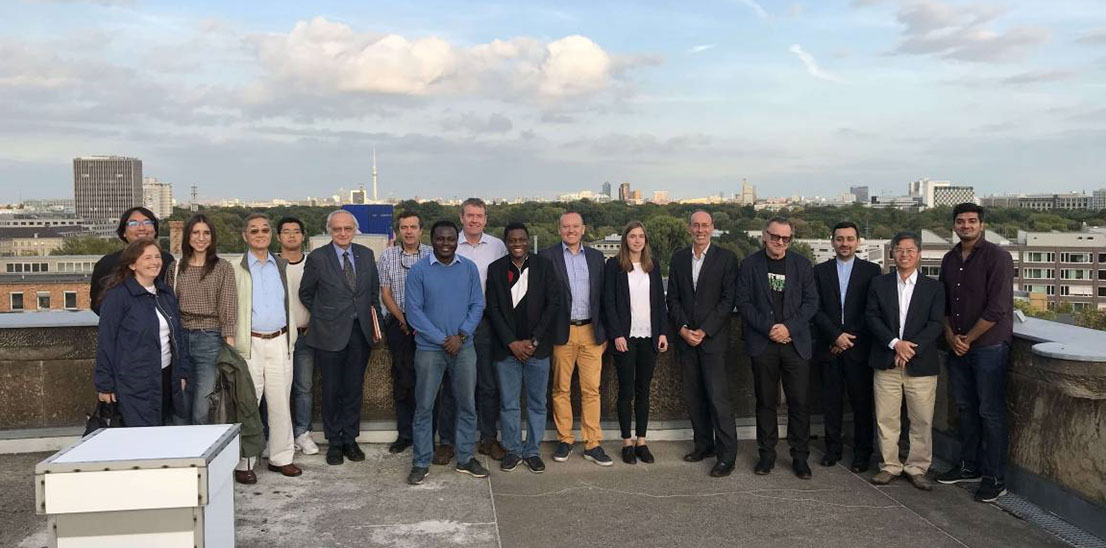 Participants of the workshop
Participants of the workshopThe workshop began with a welcome note from Prof. Harald Schuh, and Dr. Mahdi Alizadeh, chairs of the organizing committee. Afterwards the scientific session was held with the main focus on ionosphere monitoring and modeling. The second session was dedicated to ionospheric irregularities, such as travelling ionospheric disturbances, and scintillation.
On the second day of the workshop the presentations were mainly focused on physics of the ionosphere and new techniques for monitoring the atmosphere.
In total the workshop had more than 20 participants from 10 different institutions and 11 different countries, namely Austria, Germany, India, Iran, Italy, Nigeria, Poland, Spain, Taiwan, USA, and Vietnam. In a very intense final discussion the future collaboration and upcoming research topics within the framework of the next IAG term was planned.
Mahdi Alizadeh
International Workshop for the Implementation of the Global Geodetic Reference Frame (GGRF) in Latin America, Buenos Aires, Argentina, September 16-20, 2019
The International Workshop for the Implementation of the Global Geodetic Reference Frame (GGRF) in Latin America was held in Buenos Aires, Argentina, from Sep 16 to 20, 2019. This workshop is a capacity building activity of the project “Implementation of the United Nations’ Resolution on the Global Geodetic Reference Frame (UN-GGRF) for Sustainable Development in Latin America” of the International Union of Geodesy and Geophysics (IUGG) within the special grants program to celebrate in 2019 the centennial year of the IUGG foundation. The International Association of Geodesy (IAG) is the primary applicant of this project, and the International Association of Seismology and Physics of the Earth’s Interior (IASPEI), and the IUGG National Committees of Argentina, Brazil, Chile, Colombia and Costa Rica supported it. In addition to the IUGG, IAG and IASPEI support, the workshop counted on the sponsorship of the International Committee on Global Navigation Satellite Systems (ICG) of the United Nations Office for Outer Space Affairs (UNOOSA). Twenty-eight travel awards for colleagues from fourteen Latin American countries were covered with the money granted by the IUGG. ICG-UNOOSA provided six flight tickets for colleagues from Colombia, Peru, Chile, Brazil, Costa Rica, and Ecuador. The Instituto Geográfico Nacional (IGN) of Argentina and the Argentine-German Geodetic Observatory (AGGO) organised the logistics needed for the successful realisation of the meeting. The support of IUGG, ICG-UNOOSA, IGN, AGGO and all the experts participating in the workshop is highly appreciated. Attendants to the International Workshop for the Implementation of the Global Geodetic Reference Frame (GGRF) in Latin America. Buenos Aires, Argentina, Sep 16 – 20, 2019.
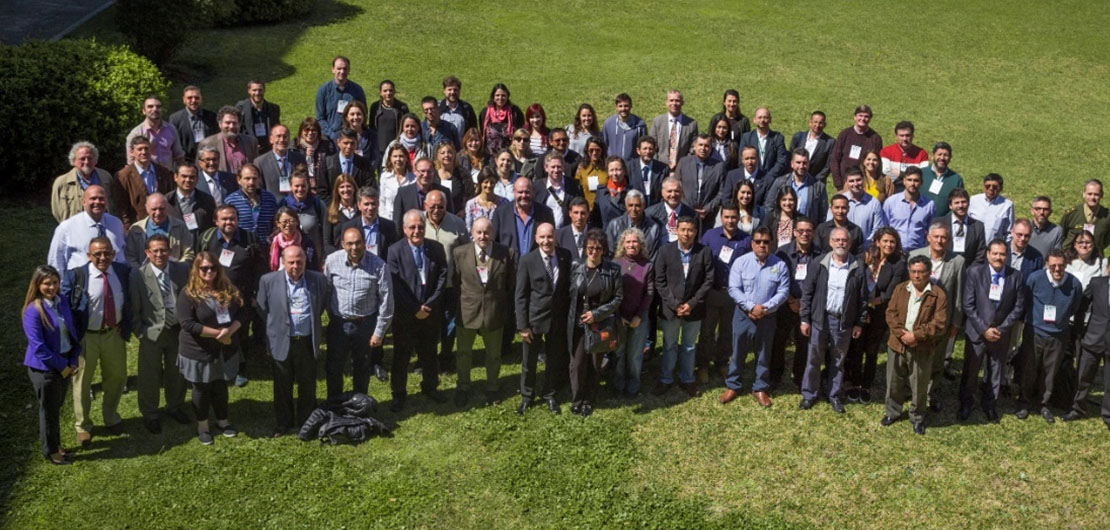
Participants of the Workshop
In total, 130 participants from 20 countries (Argentina, Australia, Bolivia, Brazil, Chile, China, Colombia, Costa Rica, Dominican Republic, France, Germany, Guatemala, Italy, Mexico, Panama, Paraguay, Peru, United States of America, Uruguay, and Venezuela) attended the workshop. With 52 presentations distributed in eight sessions, it was possible to convene for the first time politics (United Nations Committee of Experts on Global Geospatial Information Management – UN-GGIM, UN-GGIM Subcommittee on Geodesy, Group on Observations – GEO, ICG-UNOOSA), international organisations promoting science (IUGG, IAG, IASPEI, International Science Council – ISC, International Federation of Surveyors – FIG, Pan-American Institute of Geography and History – PAIGH), the highest level of expertise in Geodesy worldwide (IAG, IAG Scientific Services, the Global Geodetic Observing System – GGOS), and regional specialists in Geodesy (SIRGAS – Sistema de Referencia Geocéntrico para las Américas, gravity field modelling, geodetic observatories) to identify appropriate strategies to make real the objectives of the UN-GGRF initiative. The topics presented along the five days and the conclusions/recommendations arising from the discussions surely represent the appropriate start point to face the required activities to advance in the establishment of the GGRF in Latin America. Presentations, list of participants and conclusions of the workshop are available at http://www.sirgas.org/en/ggrf/.
LAURA SÁNCHEZ
Chair of the Workshop Program Committee
Deutsches Geodätsiches Forschungsinstitut,
Technische Universität München, Germany
Report on the 5th IAG Symposium on Terrestrial Gravimetry: Static and Mobile Measurements (TG-SMM 2019), 1-4 October 2019, Saint Petersburg, Russia
The 5th IAG Symposium on Terrestrial Gravimetry: Static and Mobile Measurements (TG-SMM 2019) took place in St Petersburg, Russian Federation, 1 – 4 October 2019, at the CSRI “Elektropribor”. It was organized by IAG Commission 2 “Gravity Field” and the State Research Center of the Russian Federation Concern CSRI “Elektropribor” with the support D.I. Mendeleyev Research Institute for Metrology (VNIIM), the International Public Association – the Academy of Navigation and Motion Control (ANMC), journal Gyroscopy and Navigation, and journal Sensors.
All the previous symposia of 2007, 2010, 2013 and 2016 was also held in Russia, at Concern CSRI Elektropribor, JSC.
The 5th Symposium was devoted to a wide range of problems concerning the development and research of instrumentation for absolute and relative measurement of gravity fields, their application to land, shipborne and airborne gravimetric survey, as well as those related to development of cold atom and superconducting gravimeters. The four streams of the symposium reflect the topics of interest of Sub-Commission 2.1 “Gravimetry and Gravity Networks”:
- Terrestrial, shipborne and airborne gravimetry;
- Absolute gravimetry;
- Relative gravimetry, gravity networks and applications of gravimetry;
- Cold atom and superconducting gravimeters. Gravitational experiments.
It should be noted that the application of quantum principles and atomic test objects (the clouds of cold atoms) in the design of new gravity measuring instruments was emphasized in a number of talks. Particular emphasis needs to be placed on new developments in quantum gravimeters for commercial application. New techniques for gravity field measurements on moving platforms (such as aircrafts and ships), especially determining the absolute gravity value aboard vehicles, were also described in several talks.
The International Scientific Committee was chaired by Academician of the Russian Academy of Sciences, Prof. Vladimir G. Peshekhonov (Russia) and Dr. Hartmut Wziontek (Germany), and also included the leading specialists from Argentina, China, Denmark, Finland, France, Germany, Italy, Japan, Poland, Russia, Switzerland, USA.
The Symposium slogan this year: «The Power of Gravity». The Symposium languages were Russian and English. Simultaneous translation was provided.
By the beginning of the Symposium the collected abstracts of papers in Russian and English were published and handed to the participants. The Symposium proceedings are planned to be published as a book of Springer Publishing in IAG Symposia Series.
60 papers were submitted. The Symposium program included 52 papers: 1 introductory paper, 31 plenary and 20 poster papers. During 3 days of the Symposium 47 presentations were made: 1 introductory paper, 28 plenary and 18 poster papers. 1 plenary paper was presented on-line by authors from Great Britain.
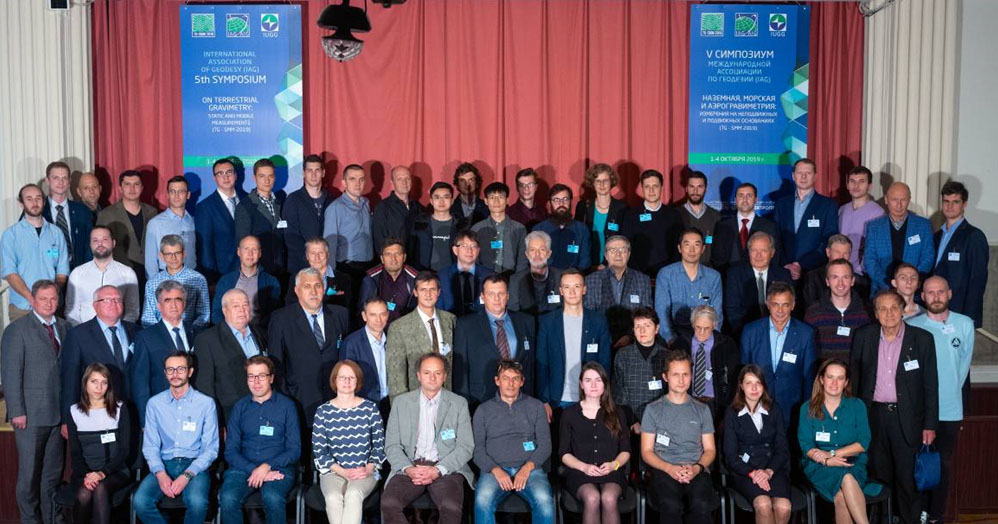
Participants of the Symposium
The Symposium was attended by 110 specialists from 16 countries: Argentina, Austria, China, Czechia, Denmark, Finland, France, Germany, Great Britain, Italy, Japan, Poland, Russia, Sweden, Turkey, Ukraine. Taking into account the co-authors of presented papers, a total of 23 countries, 39 foreign and 26 Russian companies were represented at the Symposium.
Welcome speeches were made by Prof. Vladimir Peshekhonov and Dr. Hartmut Wziontek.
The introductory talk From Pendulums to Cold Atoms – Mapping the Global Gravity Field from Surface, Aircraft and Space was given by Prof. R.Forsberg (National Space Institute, Technical University of Denmark). His introductory presentation aroused keen interest among the participants, as evidenced by lively discussion.
On the last day of the Symposium the Panel Discussion took place on the subject V Symposium TG-SMM. Present, Past and Future. The introductory presentation at the Panel Discussion was made by the Organizing Committee Chairman, Dr. A.Sokolov (Concern CSRI Elektropribor, JSC). Papers about upcoming trends in gravimetry were presented by Dr. L.Vitushkin, (Russia), Vice-chairman of the International Scientific Committee Dr. H.Wziontek (Germany), Dr.F.Greko (Italy), Prof. A.Araya (Japan). The other participants also took part in the discussion: Prof. J. Mäkinen (Finland), I.A. Oschepkov (Russia), L.P. Staroseltsev (Russia), S.A. Matvienko (Ukraine). The Chairman of the International Scientific Committee, academician of the Russian Academy of Sciences, Prof. Vladimir Peshekhonov (Concern CSRI Elektropribor, JSC) closed the discussion with his speech.
At the closing ceremony the Recognition awards for outstanding contribution to the Symposium were handed to the leading Russian and foreign scientists:
- Prof. C.Jekeli (Ohio State University, USA);
- Prof. R.Forsberg (National Space Institute, Technical University of Denmark, Lyngby, Denmark);
- Dr. R.Falk (Federal Agency for Cartography and Geodesy (BKG), Frankfurt am Main, Germany);
- Prof. J.Mäkinen (Finnish Geospatial Research Institute, Masala, Finland);
- Dr. L.Vitushkin (D.I. Mendeleyev Research Institute for Metrology (VNIIM), St. Petersburg, Russia);
- Dr. A.Sokolov (Concern CSRI Elektropribor, JSC, St. Petersburg, Russia).